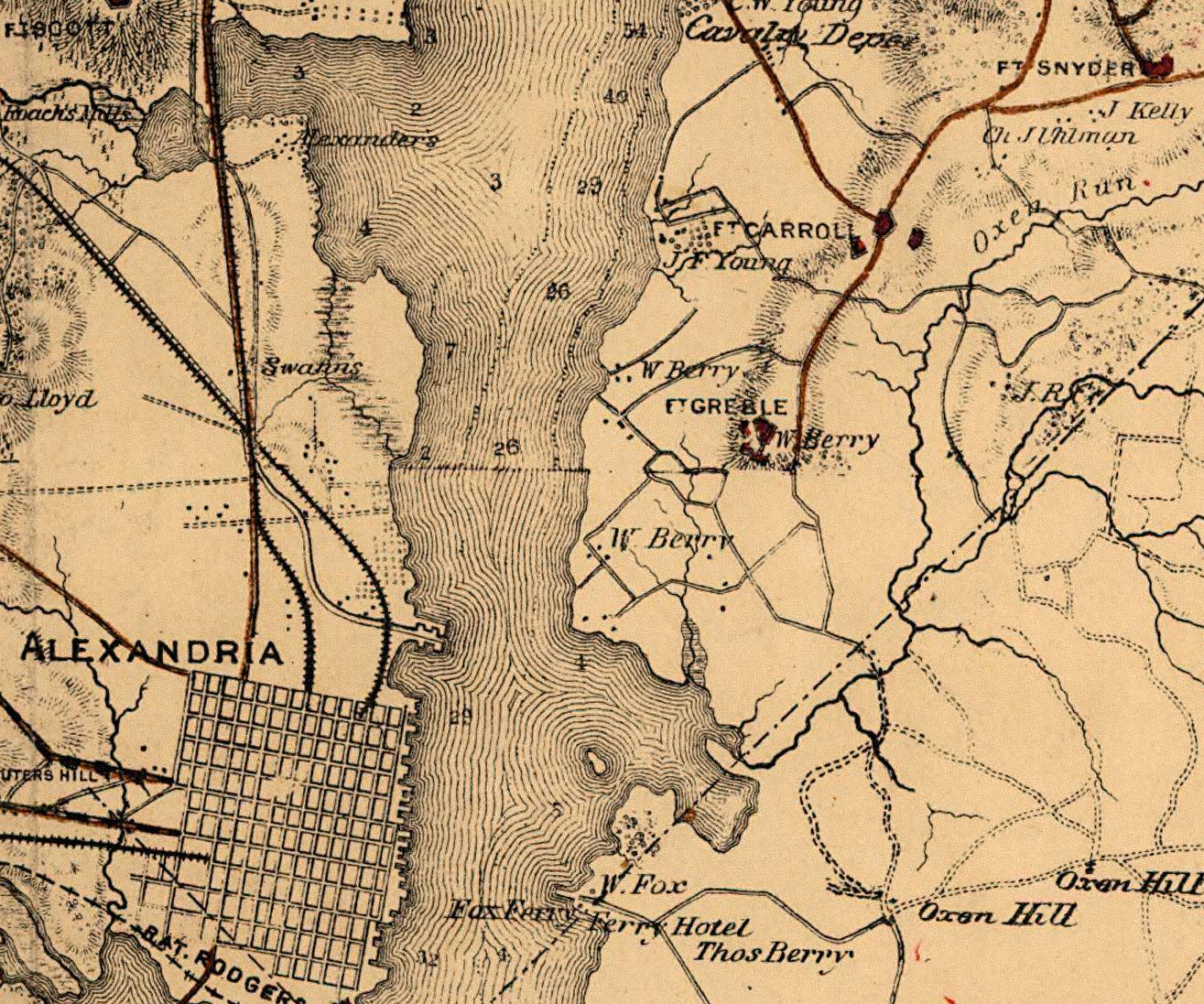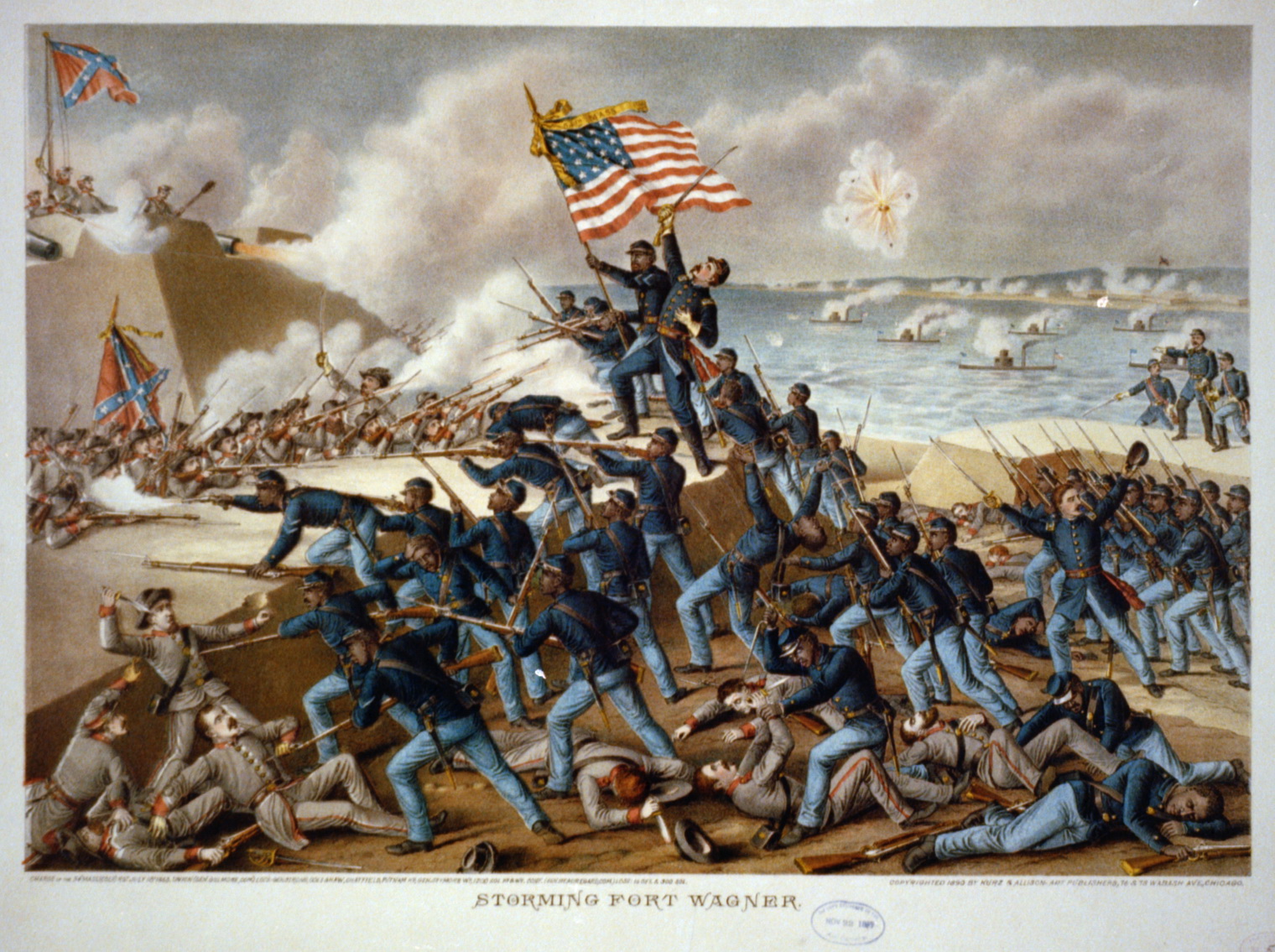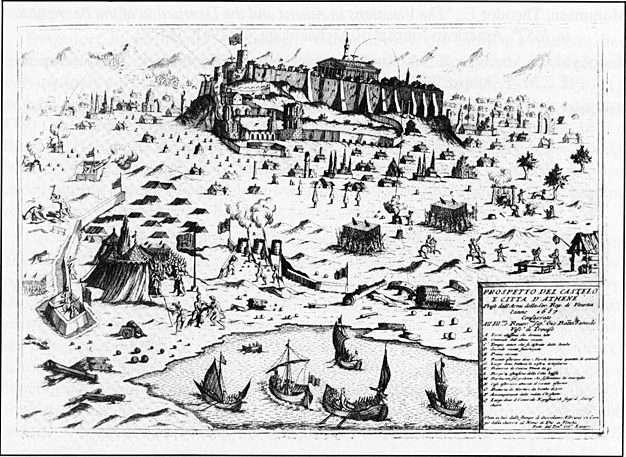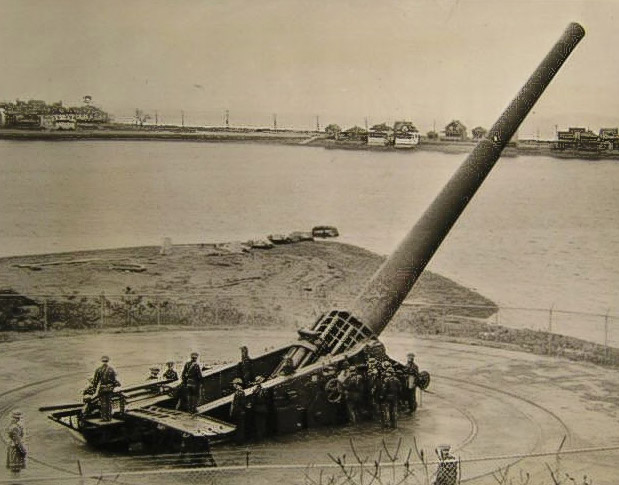|
Fort Greble
Fort Greble was an American Civil War-era Union fortification constructed as part of the defenses of Washington, D.C. during that war. Named for First Lieutenant John Trout Greble, the first West Point graduate killed in the U.S. Civil War, it protected the junction of the Anacostia and Potomac rivers, and from its position on a bluff in the Congress Heights, precluded any bombardment of the Washington Navy Yard and southeastern portions of the city. It was supported by Fort Carroll to the northeast and Fort Foote to the south. It never fired a shot during the war, and after a brief stint as a U.S. Army Signal Corps training facility, was abandoned and the land returned to its natural state. As of July 2007, the site of the fort is a community park. Planning and construction Prior to the outbreak of war, Congress Heights (so called because the Capitol building in downtown Washington could be seen from the tops of the hills) were owned by the Berry family, who also owned much ... [...More Info...] [...Related Items...] OR: [Wikipedia] [Google] [Baidu] |
Civil War Defenses Of Washington, D
Civil may refer to: *Civility, orderly behavior and politeness *Civic virtue, the cultivation of habits important for the success of a society *Civil (journalism) ''The Colorado Sun'' is an online news outlet based in Denver, Colorado. It launched on September 10, 2018, to provide long-form, in-depth coverage of news from all around Colorado. It was started with two years of funding from blockchain ventu ..., a platform for independent journalism * Civil (surname) See also * {{Disambiguation ... [...More Info...] [...Related Items...] OR: [Wikipedia] [Google] [Baidu] |
John Trout Greble
John Trout Greble (January 19, 1834 in Philadelphia – June 10, 1861 in Virginia) was a soldier in the United States Army in the American Civil War. He was killed at the battle of Big Bethel, and was the first graduate of the United States Military Academy to be killed in the war. Biography He graduated from the U.S. Military Academy in 1854, was assigned to the 2nd artillery, and stationed at Newport, Rhode Island. In September 1854 he was made 2nd lieutenant and sent to Tampa, Florida, where he served in the Indian troubles for two years. He was compelled, in consequence of a severe fever, to return home on sick leave, but in the beginning of 1856 resumed his duties, acting part of the time as quartermaster and commissary until December 1856, when he was appointed acting assistant professor of geography, history, and ethics in the U.S. Military Academy, where he remained until September 24, 1860. He was promoted to 1st lieutenant on March 3, 1857. He was detailed for active ... [...More Info...] [...Related Items...] OR: [Wikipedia] [Google] [Baidu] |
Fort Wagner
Fort Wagner or Battery Wagner was a beachhead fortification on Morris Island, South Carolina, that covered the southern approach to Charleston Harbor. Named for deceased Lt. Col. Thomas M. Wagner, it was the site of two American Civil War battles in the campaign known as Operations Against the Defenses of Charleston in 1863, in which United States forces took heavy casualties while trying to seize the fort. The Union Army's second assault on Fort Wagner, the Second Battle of Fort Wagner, included African American soldiers from the 54th Massachusetts Infantry Regiment and 3rd United States Colored Infantry Regiment. Josiah T. Walls, who went on to become a United States Congressman from Florida, was one of the soldiers. Construction Fort Wagner measured by , and spanned an area between the Atlantic on the east and an impassable swamp on the west. Its walls, composed of sand and earth, rose above the level beach and were supported by palmetto logs and sandbags. The fort's a ... [...More Info...] [...Related Items...] OR: [Wikipedia] [Google] [Baidu] |
Parrott Rifle
The Parrott rifle was a type of muzzle-loading rifled artillery weapon used extensively in the American Civil War. Parrott rifle The gun was invented by Captain Robert Parker Parrott, a West Point graduate. He was an American soldier and inventor of military ordnance. He resigned from the service in 1836 and became the superintendent of the West Point Foundry in Cold Spring, New York. He created the first Parrott rifle (and corresponding projectile) in 1860 and patented it in 1861.. Daniel Treadwell, who developed a method for making built-up guns in the early 1840s, tried to claim that his patent infringed on an earlier one, but in 1866 United States District Court court dismissed it, deciding that Treadwell's claim was invalidated by a 1843 British patent to John Frith. Parrotts were manufactured with a combination of cast and wrought iron. The cast iron made for an accurate gun, but was brittle enough to suffer fractures. Hence, a large wrought iron reinforcing band was o ... [...More Info...] [...Related Items...] OR: [Wikipedia] [Google] [Baidu] |
Mortar (weapon)
A mortar today is usually a simple, lightweight, man-portable, Muzzleloader, muzzle-loaded cannon, consisting of a Smoothbore, smooth-bore (although some models use a Rifling, rifled barrel) metal tube fixed to a base plate (to spread out the recoil) with a lightweight bipod mount and a Sight (device), sight. Mortars are typically used as indirect fire weapons for close fire support with a variety of ammunition. Historically mortars were heavy Siege, siege artillery. Mortars launch explosive shell (projectile), shells (technically called Bomb, bombs) in high arching Projectile motion, ballistic trajectories. History Mortars have been used for hundreds of years. The earliest reported use of mortars was in Korea in a 1413 naval battle when Korean gunsmiths developed the ''wan'gu'' (gourd-shaped mortar) (완구, 碗口). The earliest version of the ''wan'gu'' dates back to 1407. Ch'oe Hae-san (1380–1443), the son of Ch'oe Mu-sŏn (1325–1395), is generally credited with inventi ... [...More Info...] [...Related Items...] OR: [Wikipedia] [Google] [Baidu] |
Barbette
Barbettes are several types of gun emplacement in terrestrial fortifications or on naval ships. In recent naval usage, a barbette is a protective circular armour support for a heavy gun turret. This evolved from earlier forms of gun protection that eventually led to the pre-dreadnought. The name ''barbette'' ultimately comes from fortification: it originally meant a raised platform or mound, as in the French phrase ''en barbette'', which refers to the practice of firing a cannon over a parapet rather than through an embrasure in a fortification's casemate. The former gives better angles of fire but less protection than the latter. The disappearing gun was a variation on the barbette gun; it consisted of a heavy gun on a carriage that would retract behind a parapet or into a gunpit for reloading. Barbettes were primarily used in coastal defences, but saw some use in a handful of warships, and some inland fortifications. The term is also used for certain aircraft gun mounts. ... [...More Info...] [...Related Items...] OR: [Wikipedia] [Google] [Baidu] |
Howitzer
The howitzer () is an artillery weapon that falls between a cannon (or field gun) and a mortar. It is capable of both low angle fire like a field gun and high angle fire like a mortar, given the distinction between low and high angle fire breaks at 45 degrees or 800 mils (NATO). With their long-range capabilities, howitzers can be used to great effect in a battery formation with other artillery pieces, such as long-barreled guns, mortars, and rocket artillery. Howitzers were valued for their ability to fire explosive shells and incendiary materials into fortifications. Unlike mortars, which had fixed firing angles, howitzers could be fired at various angles, providing greater flexibility in combat. Throughout the 18th and 19th centuries, howitzers evolved to become more mobile and versatile. The introduction of rifling in the mid-19th century led to significant changes in howitzer design and usage. By the early 20th century, howitzers were classified into different categor ... [...More Info...] [...Related Items...] OR: [Wikipedia] [Google] [Baidu] |
Massachusetts
Massachusetts ( ; ), officially the Commonwealth of Massachusetts, is a U.S. state, state in the New England region of the Northeastern United States. It borders the Atlantic Ocean and the Gulf of Maine to its east, Connecticut and Rhode Island to its south, New Hampshire and Vermont to its north, and New York (state), New York to its west. Massachusetts is the List of U.S. states and territories by area, sixth-smallest state by land area. With a 2024 U.S. Census Bureau-estimated population of 7,136,171, its highest estimated count ever, Massachusetts is the most populous state in New England, the List of U.S. states and territories by population, 16th-most-populous in the United States, and the List of states and territories of the United States by population density, third-most densely populated U.S. state, after New Jersey and Rhode Island. Massachusetts was a site of early British colonization of the Americas, English colonization. The Plymouth Colony was founded in 16 ... [...More Info...] [...Related Items...] OR: [Wikipedia] [Google] [Baidu] |
Albion P
Albion is an alternative name for Great Britain. The oldest attestation of the toponym comes from the Greek language. It is sometimes used poetically and generally to refer to the island, but is less common than "Britain" today. The name for Scotland in most of the Celtic languages is related to Albion: ''Alba'' in Scottish Gaelic, ''Albain'' (genitive ''Alban'') in Irish, ''Nalbin'' in Manx and ''Alban'' in Welsh and Cornish. These names were later Latinised as ''Albania'' and Anglicised as ''Albany'', which were once alternative names for Scotland. ''New Albion'' and ''Albionoria'' ("Albion of the North") were briefly suggested as names of Canada during the period of the Canadian Confederation. Francis Drake gave the name New Albion to what is now California when he landed there in 1579. Etymology The toponym in English is thought to derive from the Greek word , Latinised as (genitive ). The root ' is also found in Gaulish and Galatian 'world' and Welsh (Old W ... [...More Info...] [...Related Items...] OR: [Wikipedia] [Google] [Baidu] |
Malaria
Malaria is a Mosquito-borne disease, mosquito-borne infectious disease that affects vertebrates and ''Anopheles'' mosquitoes. Human malaria causes Signs and symptoms, symptoms that typically include fever, Fatigue (medical), fatigue, vomiting, and headaches. In severe cases, it can cause jaundice, Epileptic seizure, seizures, coma, or death. Symptoms usually begin 10 to 15 days after being bitten by an infected ''Anopheles'' mosquito. If not properly treated, people may have recurrences of the disease months later. In those who have recently survived an infection, reinfection usually causes milder symptoms. This partial Immunity (medical), resistance disappears over months to years if the person has no continuing exposure to malaria. The mosquitoes themselves are harmed by malaria, causing reduced lifespans in those infected by it. Malaria is caused by protozoa, single-celled microorganisms of the genus ''Plasmodium''. It is spread exclusively through bites of infected female ... [...More Info...] [...Related Items...] OR: [Wikipedia] [Google] [Baidu] |
Mosquitoes
Mosquitoes, the Culicidae, are a family of small flies consisting of 3,600 species. The word ''mosquito'' (formed by '' mosca'' and diminutive ''-ito'') is Spanish and Portuguese for ''little fly''. Mosquitoes have a slender segmented body, one pair of wings, three pairs of long hair-like legs, and specialized, highly elongated, piercing-sucking mouthparts. All mosquitoes drink nectar from flowers; females of some species have in addition adapted to drink blood. The group diversified during the Cretaceous period. Evolutionary biologists view mosquitoes as micropredators, small animals that parasitise larger ones by drinking their blood without immediately killing them. Medical parasitologists view mosquitoes instead as vectors of disease, carrying protozoan parasites or bacterial or viral pathogens from one host to another. The mosquito life cycle consists of four stages: egg, larva, pupa, and adult. Eggs are laid on the water surface; they hatch into motile larv ... [...More Info...] [...Related Items...] OR: [Wikipedia] [Google] [Baidu] |
Edwin M
The name Edwin means "wealth-friend". It comes from (wealth, good fortune) and (friend). Thus the Old English form is Ēadwine, a name widely attested in early medieval England. Edwina is the feminine form of the name. Notable people and characters with the name include: Historical figures * Edwin of Northumbria (died 632 or 633), King of Northumbria and Christian saint * Edwin (son of Edward the Elder) (died 933) * Eadwine of Sussex (died 982), Ealdorman of Sussex * Eadwine of Abingdon (died 990), Abbot of Abingdon * Edwin, Earl of Mercia (died 1071), brother-in-law of Harold Godwinson (Harold II) * Edwin Sandys (bishop) (1519–1588), Archbishop of York Modern era * E. W. Abeygunasekera, Sri Lankan Sinhala politician * Edwin Abbott Abbott (1838–1926), English schoolmaster, theologian, and Anglican priest * Edwin Ariyadasa (1922–2021), Sri Lankan Sinhala journalist * Edwin Arrieta Arteaga (died 2023), Colombian murder victim * Edwin Austin Abbey (1852–1911 ... [...More Info...] [...Related Items...] OR: [Wikipedia] [Google] [Baidu] |







